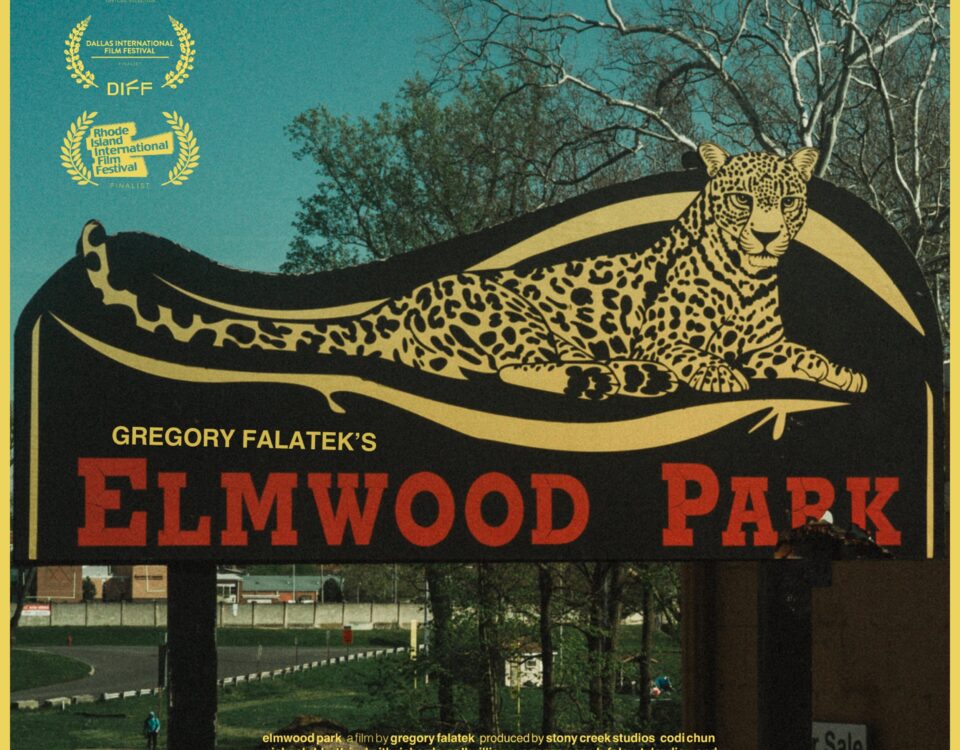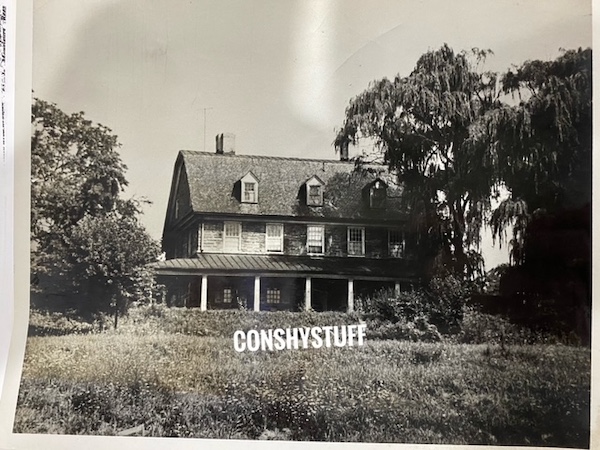
Peter LeGaux, Mount Joy, America’s First Commercial Vineyard and More All Right Here
April 11, 2021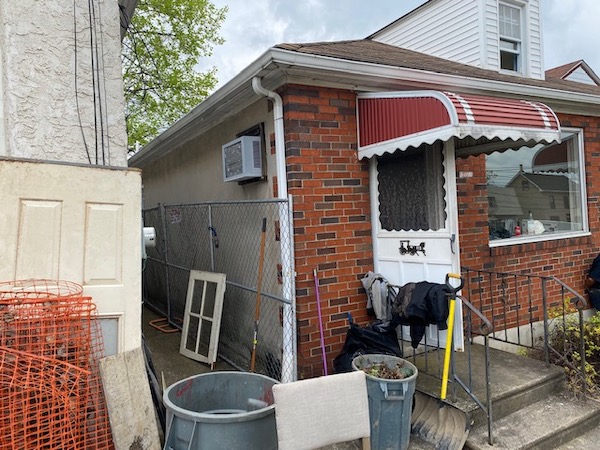
A Quick visit to the Old Josie’s Store on West 8th Ave
April 16, 2021History of a House – The Angel House
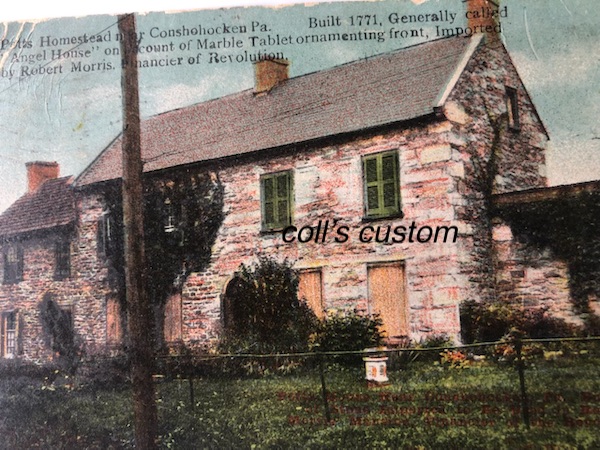
History of a House
THE ANGEL HOUSE
THE HISTORY OF A HOUSE
THAT NO LONGER EXIST
By Jack Coll
4-12-21
What-da ya say,
Are you up for a little history on this spring day? To all the younger residents in the borough, we welcome you and your families, but they probably didn’t teach you this in school!
I was driving along Butler Pike about a week ago and drove past a site where the former “Angle House” once stood and I wondered how many residents today have even heard of the Angel House.
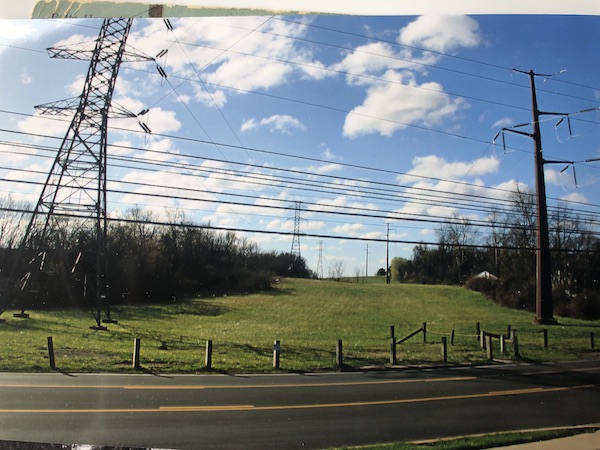
The momentary thought inspired me to take a few minutes, or in my case a few hours and trace the history of the Angel House in hopes that someone would enjoy reading a piece of history, taking your mind off the pandemic for a few minutes.
The Angel House was constructed in 1800 on Conshohocken Pike, later renamed Butler Pike. The house constructed of stone and heavy wooden beams was located between North Lane and Ridge Pike, today it would be just across the street from the Wawa, currently the site of Philadelphia Electric’s high voltage lines, next to Sherry Lake Apartments.
The Angel House was a basic eight room two story house like many other stone houses of the day. There were high polished fire places with beautiful mantels in every room in the house. Some say the high polished blue marble fire places were mined from Potts quarry once located within hundreds of yards of the house.
Imbedded in the outside of the house on the second floor, just above the front door was a marble slab. The slab of marble was six feet by four feet depicting two angles holding shields. The two angels greeted family and visitors for 126 years before the house was razed in 1928, but man what a history.
The house was built in 1800 by James Traquair for his family and the many families who came to live at the Angel House for more than a century. The Angel marble slab was a work of art commissioned for the home of Robert Morris.

Mr. Morris was a very unique individual of the day. Born in Lancashire, England on January 20, 1734 he would go on to be appointed as a delegate to the Continental Congress in 1775, appointed Special Commissioner of Finance in 1776, Author of the plan for a National Bank in 1781, Financial Agent of the United States in 1781, Delegate to the Pennsylvania Legislature in 1783, Delegate to the Constitutional Convention in 1787, United States Senator 1789-1795, and appointed Secretary of the Treasury in 1789. Morris was also a signer of the Declaration of Independence.
Robert Morris was a man of wealth and integrity in Philadelphia during the revolutionary period. Mr. Morris played an essential role in the success of the War against England, and in placing the new United States on a firm footing in the world. Morris almost single handed, saw to the financing of the Revolutionary War, in 1781 he devised a plan for a National Bank and submitted it to Congress. It was approved and became The Bank of North America, an institution that brought stability to the colonial economy, the newly established bank facilitated continued finance of the War effort, and would ultimately establish the credit of the United States with the nations of Europe. Morris was immediately appointed Financial Agent, (Secretary of Treasury) of the United States, in order to direct the operation of the new bank.
Morris founded several canal companies, (which were big business back then) a steam engine company, and launched a hot air balloon from his garden on Market Street in Philadelphia. He had the first iron rolling mill in America. His ice house was the model for one George Washington installed at Mount Vernon. He backed the new Chestnut Street Theatre, started the Horticultural Society and had a greenhouse with lemon trees in it. In the spring of 1791 he contracted with Massachusetts to purchase what in now essentially all of Western New York west between 7th and 8th streets in 1800.
Now that we understand who we’re talking about we can get back to the four foot by six foot slab of marble with the two beautiful angels carved in it.
In 1794 Morris began construction of a mansion on Chestnut Street in Philadelphia designed by Pierre Charles L’Enfant. (A rather famous designer of the day) The unfinished mansion became known as “Morris’s Folly,” and the land eventually became Sansom Street. Beautiful slabs of marble cut and polished, many of them engraved that were part of the unfinished mansion were purchased by Architect Benjamin Henry Latrobe which he later sold and the marble slabs to this day adorn buildings and monuments from Rhode Island to Charlestown, South Carolina.
The four foot by six foot slab of marble with the angles engraved in the slab was purchased by James Traquair to be used in the construction of his house along Conshohocken Pike.
Morris was later heavily involved in unsuccessful land speculations, investing in the District of Columbia, and purchasing over 6,000,000 acres in the rural south. An unexpected loan from Holland never materialized because England and the Dutch declared war on Revolutionary France. The subsequent Napoleonic Wars ruined the market for American lands and Morris’s highly leveraged company collapsed. The financial markets of England, and the United States, and the Caribbean were also suffering from the deflation associated with the Panic of 1797. Thus Morris was “Land Poor” At that time he owned more land than any other American, but didn’t have enough hard money to pay his creditors.
Morris attempted to avoid his creditors but was pursued by a former business partner, a fraud who at that time was serving time in debtor’s prison himself, Morris was arrested and imprisoned for debt in Prune Street prison in Philadelphia from February 1798 to August 1801.
After his release, and suffering from poor health, Morris spent the rest of his life in retirement. Morris died on May 9, 1806 at the age of 72 and is buried in Philadelphia at Christ Church.
Robert Morris really was quite a guy, check this out: Morris’ portrait appeared on the US $1000 notes from 1862-1863 and on the $10 silver certificated from 1878-1880. Along with Alexander Hamilton and Albert Gallatin, Morris is considered one of the key founders of the financial system in the United States. Morris and Roger Sherman were the only two people to sign the three significant founding documents of the United States, the Declaration of Independence, the Articles of Confederation, and the U. S. Constitution.
The Dollar Sign (“$”) was in common use among private merchants during the middle of the 18th century. It referred to the two columns draped with scrolls on the Spanish Milled Dollar, which predated the US Dollar. Morris was the first to use that symbol in official documents and in official communications with Oliver Pollock.
One final note on Robert Morris: Institutions named in honor of Morris include:
Robert Morris University, Pennsylvania
Robert Morris University, Illinois
Robert Morris Elementary School, Batavia, New York
Robert Morris Elementary School #27, Scranton, Pennsylvania
Robert Morris Elementary, Philadelphia, Pennsylvania
Mount Morris, New York, location of a large flood control dam on the Genesee River, was named in honor of Robert Morris.
A number of ships in the United States Navy and the United States Coast Guard have been named USS Morris or USRC Morris for him.
A small town, Morrisville, Pennsylvania, was named in honor of Robert Morris. A statue of him is in the town square
The Robert Morris Inn in Oxford, Maryland was also named after him.
Robert Morris’s home in Philadelphia, where he lived during much of his career as Superintendent, (as Agent of Marine) ran the Continental Navy (1781-1784), and while he served as a member of the Constitution Convention (1789) was subsequently used as the Executive Mansion by Presidents George Washington and John Adams. Morris rented the house to the city of Philadelphia to be used as the presidential home, while Philadelphia was the temporary US capital 1790-1800 during the construction of Washington, D. C. The Presidents house no longer exists, but the site is in the process of becoming a memorial to the first two presidents, their families, and the nine enslaved Africans who worked in Washington’s presidential household.
This makes Robert Morris unique, in that he is the only person who signed the Declaration of Independence, and the Articles of Confederation, and the US. Constitution, (and he signed all three), whose house is in a National Park, and the National Park Service has chosen not to interpret his life or career at the site of his own house.
Although it has never been documented that Morris ever visited Conshohocken, Plymouth or Whitemarsh it should be noted that this small piece of history pertaining to Robert Morris was located on the Whitemarsh side of Butler Pike for more than 125 years.
James Traquair built the house in 1800 and installed the angel slab. A century later in 1900 Jacob and Mary Ruser moved from Philadelphia into the Angel House where they spent 21 years until moving to where Ray’s Electric is currently located on Ridge Pike, in 1921 it was a 180 acre farm owned by the Leach family. Ruser raised horses and chickens. Mr. Ruser had a booth at the Reading Market Terminal selling his farm products among other foods.
Mary Fleming Kelly a one-time Spring Mill Avenue resident was born in the “Angel House” back in the 1920’s and lived there with her parents and grandparents Mr. and Mrs. Jacob Ruser. Mary Kelly for a number of years lived with her daughter Mary Duncan in one of the historic homes on East Fifth Avenue, a house built by James Wood, grandson of the James Wood who started the first iron rolling mill in Conshohocken in 1832.
The Angel House property was purchased in 1926 by the Philadelphia Electric Company which erected large steel towers carrying high tension electric lines. In the winter of 1928 the electric company determined that the property where the Angel House was located was needed for their operation and sold the house, (not the property, just the house) to Robert Neil of Spring Mill who would dismantle the house and sell the materials of ancient stones and timbers. It so happened at the same time a church congregation in Cedar Heights was planning on erecting a church of their own.
Edna Wilcox moved to Cedar Heights in 1925 and recognized a need for a place of worship in the community. Mrs. Wilcox opened a Sunday school in her house located on Hillcrest Avenue and ten children attended the school. By 1926 Lillian Frehafer moved the Sunday school operation to her home and continued the Sunday school teachings until 1928 when a lack of help forced her to discontinue the operation.
William E. Garman, at the time was president of the district of Montgomery County Sunday School Association and convinced both Mrs. Wilcox and Mrs. Frehafer to reopen the Sunday school and Mr. Garman was asked to preach at the Sunday school on Sunday evenings. When the overcrowded location of the Wilcox home became too much, William and Edna Wilcox donated two lots of land for the purpose of erecting a church.
That’s when the church hired Robert Neil of Spring Mill, (as stated Neil purchased the Angel House in 1928) for the purpose of constructing the church. In the fall of 1929 ground was broken for the erection of the building and the new Community Church using the materials from the Angel House. The church was dedicated on January 19, 1930, built at a cost of $3,500, and is located at 322 Summit Avenue.
The church still stands and people still worship at 322 Summit Avenue, “Community Church of Cedar Heights” is still printed above the front door but the church is currently called the “Heart of the Truth Ministries.”
If you’re looking for the marble slab of the two angels that once hung over the front doors of the Angle House look no more, the angel slab was sold and incorporated into the front wall of a set of row houses in Baltimore Maryland.
And there you have it friends, the story of the once popular Angel House. I’m always pleasantly surprised at where a story can take you. Think about it, the story of the marble slab once belonging to Robert Morris gave us a brief history that really goes much deeper than Conshohocken.
The story of this country’s birth is fascinating, figuring out the laws and currency and banks in the beginning was all fascinating, and the people who played a key role in much of that were also fascinating and Robert Morris was just one of the many.
And that my friend is the story of the “Angel House,” the story of a house that no longer exists.

PHOTOGRAPHS ABOVE INCLUDE:
The Angel House in the early 1920’s when Jacob Ruser and his family lived there, if you look hard enough you can see an elderly women and a child to the right of the photo. The Angel slab over the front door is obstructed by the vines in front of the house.
A postcard showing the Angel House in the mid 1920’s just before demolition by Robert Neil who used the lumber from the Angel House to build the Cedar Heights Community Church led by William Garman at that time. PECO purchased the house and property in 1926, the house was demolished in 1928.
A photograph of PECO’s steel towers on Butler Pike across from the Wawa shows the former site of the Angel House.

